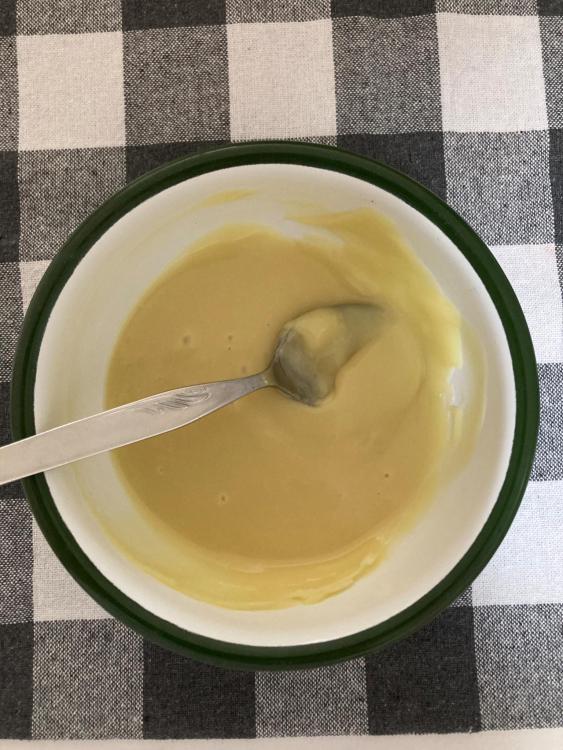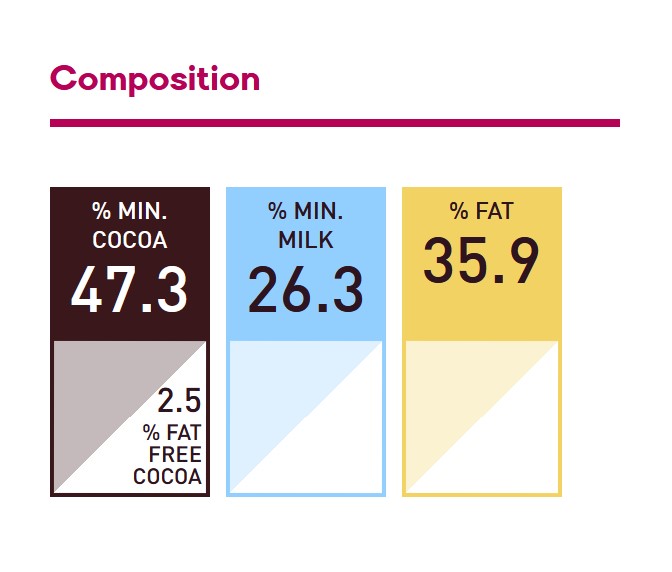
Altay.Oro
participating member-
Posts
85 -
Joined
-
Last visited
Content Type
Profiles
Forums
Store
Help Articles
Everything posted by Altay.Oro
-
Probably my dream bread ) Ann ... what do you mean with six days fermentation ... does it refer to the bulk fermentation time?
-
In my sourdough starter process ... I've completed 72 hours and had my first feeding today, There was water separation on the second day ... I stirred and continued. Besides Amy's guide ... I am also following this pdf page from "Sourdough Journey", https://thesourdoughjourney.com/wp-content/uploads/2023/11/TSJ-Complete-Guide-How-to-Create-a-Sourdough-Starter.pdf It is really a very detailed and complete guide for making sourdough starter ... I advise it to anyone who is thinking of starting from scratch like me.
-
Thank you so much ... I think I will start with this.
-
I'm starting from scratch ... those two books have different methods and ingredients for starter as far as I can see in a quick look, not fully read though. First book mentions pineapple or orange juice at the very first stage of making a starter ... other uses only water. Which differences can it make in the final product?
-
Thanks 👍... looks like it will really help me, I was planning to handle it with a single source/book ... Now seems that I'll have to spend more time on baking my own loafs than I expected, but I'm sure it'll be worth it.
-
Thanks a lot, I appreciate it.
-
Hello Everyone ... I apologize and would like to ask something that I guess has been asked a lot in the forum before. I am just starting to make my own bread and I want to make everyday sourdough breads with big holes and thick crusts. I have two books ... one is "The Bread Baker's Apprentice, 15th Anniversary Edition" and the second one is "Artisan Sourdough" by Emilie Raffa ... I took a quick look at the sourdough preparation sections in both books ... there are different explanations and ingredients in preparation of sourdough. Which book would you advise me to follow?
-
Really great work 👍 Thanks for sharing ... Just as an enthusiast, I also have a simple excel table that I created for my own local ingredients. When involving the water binding capacity of cocoa powder, I take it as 0.25 purely as a guess, meaning that 10 grams of cocoa powder binds 2.5 grams of water ... totally made-up value. What would your recommendation be for this value?
-
I temper the cocoa butter that I will use to temper the ganache by just cooling and stirring quickly at the stage when it begins to solidify ... and I use it immediately. It looks like in the photo, still liquid but more thickened, It doesn't look as oily and transparent as in the video ... I hope I'm doing it right.
-
Do you think that her cocoa butter is tempered at the end? What Is Cocoa Butter | How to Temper Cocoa Butter for Chocolate
-
Thank you, worth to try.
-
Thanks a lot 👍
-
I would appreciate it, thank you
-
How do you brew coffee with dairy? Is it possible for you to share the ganache recipe with us?
-
You're welcome ... I think 1 : 1 with dark chocolate would be very watery to be slabbed even with added cocoa butter ... also its shelf life would be considerably reduced. You may try the standard recipe, 2 : 1 dark chocolate ganache with the other ingredients I mentioned ... but you will need a food processor as it is a fatty ganache you can easily lose emulsion after adding cocoa butter. With dark chocolates, especially with high cocoa content dark chocolates, most of the time, you will end up with a texture between cream and butter ganaches. 55% dark chocolates would be more suitable for the first attempts.
-
Hi ... I think it's a fat rich cream ganache ... seems to me as a standard 2,5 : 1 milk chocolate ganache with added cocoa butter ... with the ratios (water / sugar, fat / total, sugar / total etc.) taken from the nutrition label together with the ingredient list, my approximate guess is: Milk Chocolate 250 Cream (% 40) 100 Cacao Butter 50 Glucose Syrup 50 It has a low water / sugar ratio, so without added sugar alcohols, 30 days shelf life below 10 C is ok I think.
-
Yes ... but it takes into account the sugar coming from the chocolate. If you complete the recipe by adding 200 grams of dark chocolate, then 30 grams of glucose will be enough for 100 grams of cream.
-
With a little bit more sweetness, adding some sugar syrups - glucose, invert etc. - works ... and with added sugars, you may now add more cream or any other watery ingredient for additional fluidity without increasing aW ... approximately 1 unit of %35 cream with 3 units of glucose/invert would not change the original aW level. Another solution would be to convert to a dark chocolate having a smaller cocoa solids percentage.
-
No glucose syrup - how to adjust recipe for ganache?
Altay.Oro replied to a topic in Pastry & Baking
May it be a piping ganache? It is not possible to get the same structure, taste etc ... but you may add 50 units of honey in place of 100 units of glucose syrup for ending up with the same sweetness level of the original recipe. -
Even if ganache easily emulsifies by hand stirring, it is always better to use a blender or a food processor for better homogenized emulsions/ganaches.
-
I roughly know the functions that various type of sugars do on the end result of the ganache structure, sweetness, stiffness etc ... but still could not get the exact decision process used for calculating the rigorous amounts of different sugar types to add to the recipes when fine tuning. @Rajala if possible, can you share with us your complete decision process under your choice of sugars and amounts of them used in this ganache formulation?
-
Same here ... I have molded some chocolate pieces today for my nephews ... downside is ... chocolate becomes slighty overtempered at nights when the room temperature cools down a little bit near to 28 C 😎
-
I think so ... by the way I got my bag today and it is the same label on the bag.
-
I want to formulate a ganache recipe with Callebaut Ruby, but can not solve the table below which I got from the Callebaut site ... My rough estimation for the milk fats is % 8 ... then the cocoa fat would be %28 ... and the non fatty cocoa solids would not be % 20? What does "2.5 % FAT FREE COCOA" on the lable mean?
-
I think it is ok to mold some chocolate bars until 27-28 C for a home chocolatier ... maybe even until 30 C ... of course with a refrigerator for hardening the molded pieces. Enjoy the extended period of time to play and practice with tempered chocolate at the room temperature.





